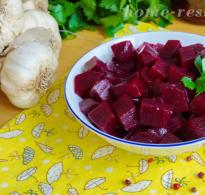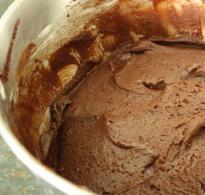Ivan - narrow-leaved tea - honey plants. Sleeping on bees - hive therapy - fireweed - honey herb fireweed crossword clue
If there is a fire in the forest, then one of the first plants to emerge from the ashes, of course, will be Ivan-tea. Perhaps this is because its seeds are quite light, and therefore are transported by wind over vast distances. It grows well on ash, populating wastelands. In good light conditions, the first flowers will appear within two or three years. Very often in wastelands, meadows or forest clearings you can find these bright pink flowers.
Very often, Ivan tea is confused with its relative, fireweed. However, you shouldn’t do this, fireweed blooms completely differently, even though it looks very similar to Ivan-tea. The leaves of Ivan tea are also different; those of fireweed are sharper, with small teeth along the edges. The flowers of these two plants are also excellent. In fireweed they are much smaller and not as bright as in Ivan-tea; sometimes you can even find almost white fireweed flowers.
In the Amur basin, Ivan tea is one of the best and most widespread honey plants. An interesting fact is that plants growing in burnt areas produce larger amounts of nectar. Plants that grow in more northern areas are also more productive.
Based on observations, we can say that at an average air temperature of 26 degrees Celsius, one flower releases from 5.0 to 7.0 milligrams of sugar, this is at normal humidity. As the moisture in the air decreased, the sugar content also dropped, and then it was equal to 0.3 milligrams.
On average, you can collect from 150 to 550 kilograms of honey from one hectare. The highest honey collection rates are observed in Oluchensky, Nanaisky, and Komsomolsky districts. Along the valleys of rivers such as Anyui, Amgun and Guru.
If the weather conditions were favorable, the strongest hive could gain three to six kilograms in a day.
If we consider the southern and central parts of Primorye, then Ivan-tea is not an important honey plant, since the production of nectar is very low, and the areas of its growth are also not large, so it is of no interest to bees. On the island of Sakhalin, the Kamchatka Territory, in the Magadan region and the northern regions, it grows in abundance, forming entire fields, and, as a rule, produces nectar very abundantly.
Bees are brought here from the south of the Primorsky Territory for bribes in order to obtain honey for sale. Thanks to this simple, time-consuming, relatively short manipulation, beekeepers have the opportunity to significantly increase the productivity of their apiaries.
Examples of the same migrations of apiaries are their export from the Primorsky Territory to the north of the Amur region, where raspberries bloom profusely. Therefore, by the time the linden blossoms, the apiaries already have from 30 to 60 kilograms of honey in their honeycombs in each bee colony.
Most of the population of the Far East knows Ivan tea. Let's give it a brief description. Fireweed is a perennial plant with a branched strong root. It reaches a height of 0.8 to 1.8 meters. It has large, pointed leaves. There are a large number of flowers on one inflorescence. The color of the flowers is most often pale pink, but brighter color combinations are also found. The flowering period of Ivan tea begins somewhere in mid-July and ends in early September.
But not only honey collected from Ivan tea is useful. An interesting fact is that the vitamin C content of its leaves is three times higher than that of citrus fruits. Ivan tea contains a huge amount of microelements, which is comparable to their content in vegetables. Its leaves contain iron, molybdenum, boron, nickel and copper. All of these are elements that stimulate hematopoiesis, and are also enhancers of the body’s natural immune properties.
The root system of the plant contains large reserves of starch, so in terms of nutritional value and energy value they can even act as substitutes for potato tubers. Fresh roots with young spring shoots are very similar in taste to cauliflower and asparagus.
In order to remove astringents from the rhizomes of Ivan tea, it is necessary to collect them after the autumn withering of the above-ground parts, then cut them into small pieces and wash them thoroughly. After these procedures, the rhizomes are dried and crushed in a mortar or coffee grinder.
The resulting powder is very useful to add to flour in baking dough, it can increase their sweet taste.
Drinks made from the flowers and leaves of the plant also have a pleasant taste. Young leaves and shoots can be added as greens to salads and soups.
The famous Koporye tea in Rus' was obtained from the leaves of Ivan tea. This tea was sent for sale to other countries in very large quantities, which is how popular it was. Koporye tea is in no way inferior to the famous Georgian tea in its beneficial and tasteful qualities.
In Tibet, Ivan tea is used in medicine, mainly as a sleeping pill and antipyretic medicine. Ivan tea leaves also have an excellent wound healing effect. Very often, doctors who adhere to traditional methods of treatment prescribe various herbs, which include Ivan tea. Such diseases are gastritis, stomach ulcers, colitis, as well as other diseases where its anti-inflammatory effect is required.
Turning to all this data, we can conclude that the cultivation of this plant in the gardens of rural residents, as well as in summer cottages, would be of great benefit. With the help of Ivan-tea, it is possible to realize real savings. Just think, it can replace many early vegetables that people buy in supermarkets at inflated prices, and even without a guarantee of product quality. It can be used as a good honey plant, as well as a valuable medicine. But, perhaps, the main advantage for a city dweller, so eager for the natural environment and beauty after the noise of the city, is the aesthetic appeal of the plant. If you plant Ivan tea in your garden plot, it will delight the eye with its bright pink flowers throughout almost the entire summer, due to which the summer cottage plot will immediately be transformed and filled with colors.
Honey from fireweed, obtained by bees from the nectar of this plant, is transparent, with a slight yellow tint. It has a delicate delicate aroma, and after the formation of crystals it becomes white. The consistency resembles snow grains, and sometimes even sour cream or lard. Good at providing bees with food in winter.
Ivan tea reproduces by shoots, seeds and rhizomes, so it can easily be transferred from the forest edge to a personal plot.
Based on materials from the journal Beekeeping.
Ivan - narrow-leaved tea - Chamerion angustifolium (L.)Holub. Herbaceous and shrubby forest plants are honey plants.
Fireweed is a perennial herbaceous plant of the fireweed family (Onagraceae), 60-120 cm high with erect, cylindrical, slightly branched stems. The leaves of willow-tea are alternate sessile, lanceolate, pointed, dark green, bluish-green below, the flowers are purple-pink, collected in a long terminal raceme. Corolla of fireweed with four petals. The calyx is deep, four-parted, has eight stamens, a pistil with a four-parted stigma and lower ovary. The fruit is a long tetrahedral pod-shaped capsule. Fireweed seeds are numerous, with a fluffy white tuft.
Ivan-tea angustifolia is characterized by a long flowering time (1–2 months), and the flowers have an abundance of nectar. During flowering, one flower releases from 0.46 to 25.0 mg. Honey productivity thickets of fireweed reaches 350–500 kg/ha. Honey productivity of one plant is 0.79 g, one flower is 9.8 mg.
Ivan tea also has a high pollen content.
Fireweed often grows together with raspberries in fresh cutting areas and burnt areas. In the taiga regions of the European part and Siberia, control hives show daily honey yields of up to 10–14 kg. Quite widely distributed throughout the Non-Chernozem Zone. Often forms continuous thickets. In many places it is one of the main honey plants. In terms of distribution and honey productivity, it has no equal.
Blooms from June to August. Bees the flowering fireweed plant is very actively visited.
Fireweed honey in liquid form it is watery-transparent, with a greenish tint, in a crystallized state it is almost white. A fine-grained, lard-like mass quickly crystallizes. The aroma is very delicate, but weakly expressed, the taste is pleasant. It has long been used as a soothing, anti-inflammatory and enveloping agent for gastritis with high acidity, gastric and duodenal ulcers. They successfully treat throat diseases, constipation, and chronic diseases of internal organs. In Tibetan medicine it is used for diseases of the mucous membranes and skin. This honey stimulates hematopoiesis and increases the body's protective properties, and dissolved in warm water has a beneficial effect on insomnia and headaches, normalizes intestinal activity, and is useful for nursing mothers.
Ivan-tea is a medicinal plant. Ivan tea has long been known in Russia as “Koporo tea”. Tea was made from its leaves, which was in demand far beyond the borders of the St. Petersburg province. Angustifolia fireweed has an astringent, hemostatic, mild laxative, emollient, wound-healing effect and weak soporific properties. An aqueous infusion of the herb is taken orally for headaches and insomnia and as a uterine remedy. Crushed leaves are applied to wounds.
Pollen grains fireweed three-pore, spherical in shape. Diameter 4.8-8.4 microns. In outline from the pole they are rounded-triangular, with pronounced pores, and from the equator they are rounded. The pores are round, intra-collar, 17-20 µm in diameter; the pore membrane is tuberculate. The width of the mesoporium is 61.2-68.8 µm. The exine in the center of the mesoporium has a thickness of 1.6-1.8 µm, and near the pores it is thickened to 7 µm. The sculpture is thin, smoothed-lumpy. The pollen color is yellow-green.
Herbaceous and shrubby forest plants - honey plants
Ivan - narrow-leaved tea - Chamerion angustifolium (L.) Holub.
A perennial herbaceous plant of the fireweed family (Onagraceae), 60-120 cm high with erect, cylindrical, slightly branched stems. The leaves are alternate sessile, lanceolate, pointed, dark green, bluish-green below, the flowers are purple-pink, collected in a long terminal raceme. Corolla with four petals. The calyx is deep, four-parted, has eight stamens, a pistil with a four-parted stigma and lower ovary. The fruit is a long tetrahedral pod-shaped capsule. The seeds are numerous, with a fluffy white tuft. Quite widely distributed throughout the Non-Chernozem Zone. It grows in forest clearings, burnt areas, peat bogs, along railways and highways, along the edges of reclamation canals. Often forms continuous thickets. In many places it is one of the main honey plants. In terms of distribution and honey productivity, it has no equal.
Blooms from June to August. Bees This flowering plant is very actively visited. Honey productivity fireweed high and depending on weather conditions is 120-600 kg per 1 ha.
Fireweed honey in liquid form it is watery-transparent, with a greenish tint, in a crystallized state it is almost white. A fine-grained, lard-like mass quickly crystallizes. The aroma is very delicate, but weakly expressed, the taste is pleasant. It has long been used as a soothing, anti-inflammatory and enveloping agent for gastritis with high acidity, gastric and duodenal ulcers. They successfully treat throat diseases, constipation, and chronic diseases of internal organs. In Tibetan medicine it is used for diseases of the mucous membranes and skin. This honey stimulates hematopoiesis and increases the body's protective properties, and dissolved in warm water has a beneficial effect on insomnia and headaches, normalizes intestinal activity, and is useful for nursing mothers.
Pollen grains Ivan chaya three-pore, spherical in shape. Diameter 4.8-8.4 microns. In outline from the pole they are rounded-triangular, with pronounced pores, and from the equator they are rounded. The pores are round, intra-collar, 17-20 µm in diameter; the pore membrane is tuberculate. The width of the mesoporium is 61.2-68.8 µm. The exine in the center of the mesoporium has a thickness of 1.6-1.8 µm, and near the pores it is thickened to 7 µm. The sculpture is thin, smoothed-lumpy. The pollen color is yellow-green.
Ivan-tea is a medicinal plant. Ivan tea has long been known in Russia as “Koporo tea”. Tea was made from its leaves, which was in demand far beyond the borders of the St. Petersburg province. Angustifolia fireweed has an astringent, hemostatic, mild laxative, emollient, wound-healing effect and weak soporific properties. An aqueous infusion of the herb is taken orally for headaches and insomnia and as a uterine remedy. Crushed leaves are applied to wounds.






